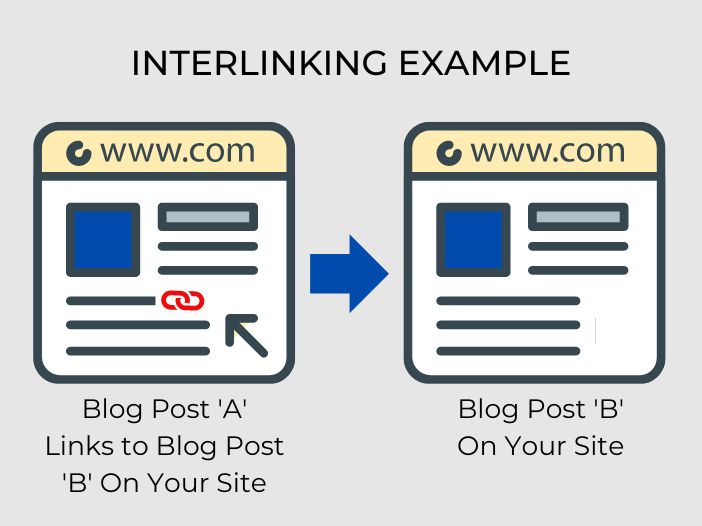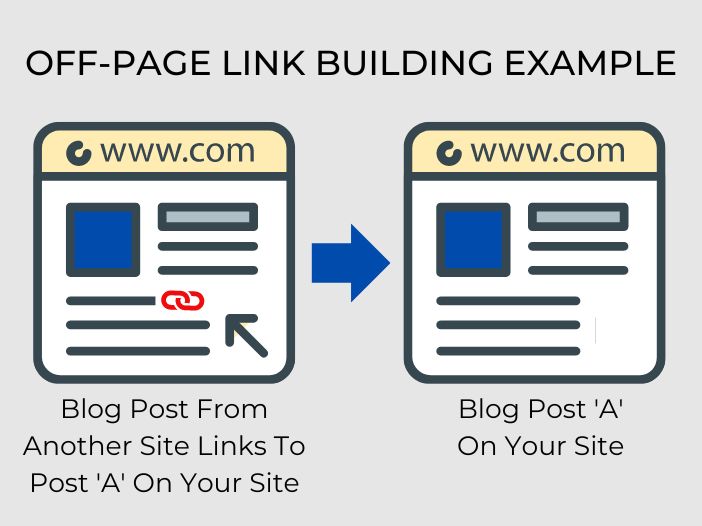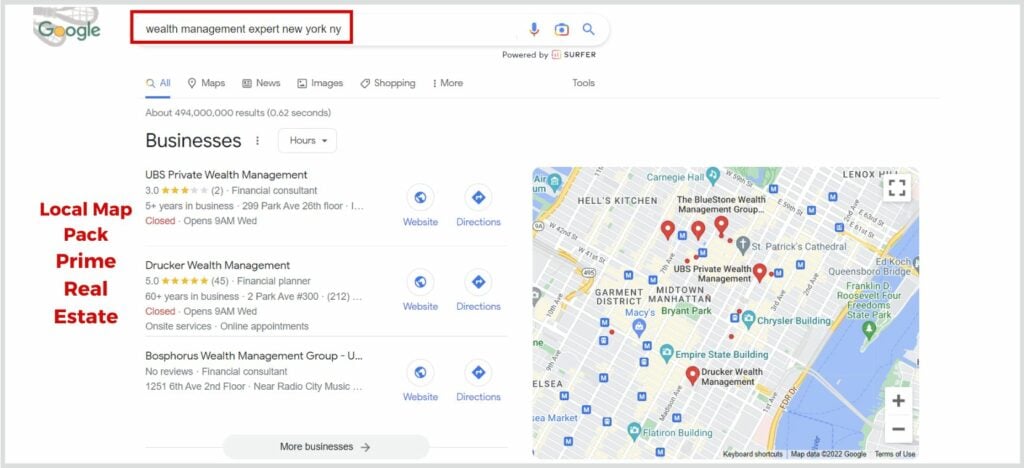As the financial service industry continues to evolve, so do the opportunities for financial service professionals to reach and engage their target audiences.
One of the most effective ways to reach consumers is through search engine optimization (SEO).
SEO for financial services is the practice of optimizing a website for Google search to earn higher organic web traffic and improve the site’s visibility.
In this article, we will discuss:
- Why financial SEO will help you build your financial services company
- How to optimize your financial services website
- The latest trends in SEO for financial services brands
- Opportunities for marketing and growth through financial services SEO
If you are looking to improve your financial services SEO to increase your brand’s visibility and organic search traffic, then this guide is for you. Let’s get started.

Why SEO?
SEO is essential for financial services companies because it can help you reach your target audience more effectively.
Consumers today are increasingly turning to the internet to research and compare financial products and services.
Having a well-optimized SEO strategy can help:
Increase your website traffic
Without traffic to your financial services website, it’s like having a store in the middle of the desert- no one will know you exist.
According to Hubspot, SEO is one of the most effective ways to drive organic traffic to your website.
A well-executed financial SEO strategy can help you earn higher rankings in Google search results. As a result, you are making it more likely that consumers will find and visit your site.
With the proper user experience and call to action, those visitors will turn into leads on “autopilot.”
Improve your visibility and brand awareness
Ranking higher in search results can improve your brand’s visibility and awareness. This is especially true for financial advisors, as many consumers often research multiple options before making a final decision.
Better conversions
Consumers still have high trust for the results on the top search engine results pages.
So, if you can earn a top spot in the search results for relevant keywords, it’s more likely that those visitors will convert into leads or customers.
According to a study from BrightEdge, organic search is responsible for 53% of website traffic and up to 70% of revenue.
Digital first experiences
The last couple of years has expedited the way consumers make decisions. They want to be able to do it themselves or get it done quickly.
This is why digital marketing and financial SEO are so valuable to financial institutions.
This shift has created an increase in digital-first experiences, which means that companies that can provide relevant and valuable information online will be better positioned to succeed.
Financial SEO is vital in providing a digital-first experience as it can help you ensure that your website is found by consumers when searching for relevant information.
Financial service falls under YMYL
YMYL stands for “Your Money Your Life” and plays a significant role in financial services SEO.
Google has stated that YMYL pages “could potentially impact a person’s happiness, health, financial stability, or safety.”
This means that Google takes extra care to ensure that the content from financial institutions on these pages is high-quality and trustworthy.
As a result, a financial advisor needs to be extra vigilant about their website’s content quality to ensure that it meets Google’s standards.
Since this cannot be accomplished in a day, it’s essential to develop a comprehensive financial SEO strategy that will help you improve your website over time.

How to win with financial services SEO
When you read about digital marketing or financial SEO, it can seem so easy.
All financial institutions have to do is add a few blog articles, sprinkle in some keywords, and viola! You now have a perfectly optimized website.
If only it were that easy. The reality is that SEO for financial services providers is highly competitive and can be quite challenging.
There are already so many well-established financial institutions that have been doing financial SEO for years.
They have the resources and a team to create high-quality content, link building, and do all the other things necessary to rank well on Google.
So, how can a brand compete against these big players using financial services SEO?
There are some key things that you need to keep in mind:
Improve your E-A-T
E-A-T stands for “Expertise, Authoritativeness, and Trustworthiness.”
Google has stated that these are three of the most important factors when ranking pages in the search results.
This means that you need to make sure that your website’s content is written by experts in the field who are considered authorities on the topic.
It also needs to be trustworthy, which means it should be accurate and free of errors.
One way to build this is through high-volume content creation. Of course, you can’t sacrifice quality for speed. Constantly creating new, high-quality content will show Google that your website is a trusted source of information.
Truly understand your target audience
Before financial institutions write one word, you must understand your target audience to understand the type of content to create.
Do your keyword research
There are a number of factors that go into financial SEO. One of the most important is finding the right financial services keywords.
What are they looking for when they search for keywords related to your business?
Are they looking for information, or are they looking to make a purchase?
This is important because it will determine the content you need to create. To rank for informational keywords, you need to create blog articles.
But if you want to rank for commercial keywords, you need to create product pages or other types of content that will help users make a purchase.
If you don’t take the time to understand your target audience’s search intent, you’ll be wasting your time creating content that no one wants to read or brings in no results.
Financial SEO can help you get discovered, but if the content you create has zero search volume, then that effort will not help your financial services company grow.
Keyword research can be time-consuming, but will give financial institutions the best chance to create content that attracts and converts.
Optimize your website’s speed and performance
Your financial website’s speed and SEO performance are also important ranking factors. If your website is slow or doesn’t work properly, users will likely leave and go to another website.
This will hurt your ranking in the search results because Google wants to provide users with the best possible experience.
To improve your financial website’s speed, you need to ensure that your images are optimized, your code is clean, and you’re not using too many plugins.
Mobile responsiveness
Mobile devices are now responsible for over 50% of global web traffic, and this number will only increase.
This means that your website needs to be designed for mobile devices, or you will lose a lot of potential traffic and customers.
Fortunately, Google has made it easy to test if your website provides an excellent experience to mobile users with their Mobile-Friendly Test tool.
Just enter your website’s URL, and Google will tell you if any issues need to be fixed.
Optimize your Meta data
After you find keywords to write about, add them to your page’s meta descriptions and tag them accordingly.
This will helps search engines understand what your pages are about and if they match up with what users are searching for.
Your custom meta descriptions, which appear in the search results, should be clear and concise and explain what users will find on your page.
Your meta description alone should be enough to convince users to click through to your website.
Don’t forget about Title tags
Your title tags are also crucial because they appear on the search engine result pages and give potential customers an idea of what your page is about.
Search algorithms have become much more sophisticated over the years and can now understand the context of your content.
This means that you don’t need to worry about keyword stuffing your title tags, but you should still include them if they’re relevant.
Use title tags on your website pages to guide users and search engines through the content on your website.
Create educational content for your users
Search engines are constantly on the hunt for a web page that is truly helpful for the person searching.
This is what we refer to as “educational content.”
It’s something that gives users the information they need to make a decision or solve a problem.
Suppose you want your website to rank higher in the search results. In that case, you must focus on creating educational content to help your potential clients.
This could be in the form of blog articles, infographics, guides, or even video tutorials.
The important thing is that it’s beneficial and not just a sales pitch masquerading as educational content.
Content marketing is one of the most important aspects of financial SEO.
Content marketing is creating and promoting content for the sole purpose of attracting and engaging users.
It’s not about selling; it’s about providing value.
If you want to rank higher in the search results, you must focus on creating high-quality content that will attract and engage users.
The critical thing to remember is that SEO and content marketing are two sides of the same coin. You can’t have one without the other.
Financial SEO is useless if you don’t have any content, and content marketing is pointless if no one can find it.
On-page SEO Search Strategies
Search engines crawl the web to find and index content.
To make sure your website’s content is getting indexed and ranked, you need to focus on optimizing your website for on-page SEO.
There are many factors you need to consider when optimizing your website for on-page SEO, but some of the most important are:
One of the most important factors is interlinking.

Interlinking is when you link to other related pages on your website. This helps search engines understand your page’s topic and can also help improve your ranking.
Use keyword-rich anchor text when linking to other pages on your site.
Another critical factor is the use of header tags.
Header tags are used to structure the content on your pages. They help search engines understand the hierarchy of your content and can also improve your click-through rate from the search results.
Make sure to use keyword-rich titles and descriptions for all of your header tags.
Finally, you need to focus on optimizing your website’s structure.
You want it to be as easy as possible for search engines to understand the topic of your page and the relationship between the content on your website.
An excellent way to do this is to focus on using a silo structure for your website.
This is where you group related pages and content under a single category or theme.
For example, if you have a blog about 401 K’s, you would want to group all of your blog posts about 401 K’s together in a single category.
It’s okay if you also want to write about other topics, but keep those separate from your 401K content.
This will help search engines understand the topic of your page and the relationship between all of your content.
Off page SEO
Off-page SEO focuses on optimizing your website for factors outside your control.
The most essential factor is backlinks.
Backlinks are links from other websites that point back to your website.
The more backlinks you have from trusted high authority sites, the higher your website will rank in the search results.

To get backlinks, you need to promote your content.
The best way to do this is to focus on creating great content that people will want to link to.
If you create truly exceptional content, you’ll find that other people will naturally start linking to it.
Another way to get backlinks is to reach out to other website owners and ask them to link to your content.
Remember, the goal is to get links from high-authority sites relevant to your website.
Don’t just go out and get a bunch of links from any old website. That will hurt your rankings.
Finally, you need to focus on social signals.
Social signals signal to search engines that your website is popular and people are talking about it.
If you can get people to share your content on social media, that will help improve your ranking.
People only share what they like and find valuable, which is why a search engine like Google will consider social signals when ranking websites.
To sum it up, on-page SEO is about optimizing your website for factors within your control. While off-page SEO is about promoting your website and getting backlinks from high-quality sites you don’t control.
Local SEO Optimization
Local SEO is the perfect way for local financial institutions to get discovered online.
You need to do a few things to ensure you’re optimized for local SEO.
First, you must ensure your website is configured for local SEO.
This means adding your business name, address, and phone number (NAP) to your website.
It’s also essential to make sure your NAP is consistent across the web.
Having different NAP information on different websites will confuse search engines and hurt your ranking.
Next, you need to make sure you’re listed in all the relevant online directories.
This includes directories like Google My Business, Yelp, and Bing Places for Business.
If you’re not listed in these directories, you’re missing out on a valuable opportunity to get discovered in local search results.
Finally, you need to focus on getting positive reviews.
Positive customer reviews are a key ranking factor for local SEO.
The more positive reviews you have, the higher you’ll rank in local search rankings.
To get started with local SEO, make sure your website is correctly configured for local SEO and that you’re listed in all the relevant online directories.
Then, start working on getting positive customer reviews.
Monitor your results
Finance SEO takes time and effort, but it’s worth it.
To ensure you’re on the right track, monitoring your results is important.
One way to do this is to track your organic traffic.
Organic traffic is the traffic you get from people finding your website.
If you’re seeing an increase in organic traffic, that’s a good sign that your financial SEO efforts are paying off.
You can track your traffic with a free to like Google Analytics.
Another way to track your results is to track your keyword ranking for search queries.
This is the position your website ranks for specific keywords in the search results.
If you’re seeing an increase in your keyword ranking, you’re moving up in the search results.
You can use a free tool like Google Search Console to track your ranking.
Financial SEO is an important part of any online marketing strategy for financial advisors.
Financial advisors usually miss this part and continue to do things that are not effective for finance sites.
Search habits change, which can negatively affect finance companies. Monitor your results so you can make the necessary changes to stay ahead of the curve.

SEO for financial services trends and opportunities
Financial services brands that invest in an effective financial SEO strategy can stay one step ahead of the competition by understanding and capitalizing on consumer behavior trends.
Here are three key financial SEO trends for the financial services industry:
1. Searches for “Financial Services” hold strong
According to Google Trends, global searches for the term “financial services” have remained steady over the past five years.
Now that there has been an influx of financial websites over the past couple of years, competition will only get more challenging.
As a result, it’s becoming increasingly important for financial service brands to have a strong financial SEO strategy in place to ensure that their website appears high in Google’s search results.
2. Long-Tail Keywords are Key
To rank highly in Google’s search results, targeting long-tail keywords relevant to your brand and products is essential.
Long-tail keywords are longer, more specific phrases consumers are more likely to use when they are further along in the buying cycle.
For example, a consumer just beginning their research on financial services products may search for “financial services” or “financial planning.”
However, as they become more knowledgeable about the different types of products available, they are likely to use more specific long-tail keywords such as “retirement planning services” or “tax-advantaged investment accounts.”
By targeting these more specific keywords, financial service brands can improve their chances of appearing in Google’s search results for consumers further along in the buying cycle and more likely to convert into customers.
3. Featured Snippets are a Prime Opportunity
Featured snippets are the short, featured answers that appear at the top of Google’s search results in response to specific queries.
According to Search Engine Watch, featured snippets earn up to 35.1% of all clicks on a given SERP (search engine results page).
This presents a prime opportunity for the financial services sector to earn valuable organic web traffic.
In order to be eligible for featured snippets, optimizing your website content for the questions that consumers are likely to ask about your products and services is essential.

4 . People Also Ask
Find your target audience pain points and go down the “People Also AsK’ rabbit hole on the search engine results pages.
Answer as many of these questions that make sense, and be sure you are truly answering the question.
When potential clients land on your web pages, you want them to feel satisfied that their question has been answered and that you have given them what they were looking for.
Do enough of these, and your search volume is sure to increase.
5. Go After the Local Queries
There are plenty of searches being made with local intent. For example, if you have a financial service that is only offered in specific locations, make sure your website and content reflect that.
Use schema markup to list your service area, include location pages if you have multiple offices, and get listed in the major directories.

These factors send strong local signals to Google, which will help you rank better for these searches.
Financial service brands can stay ahead of the competition by understanding and capitalizing on these key financial SEO trends and ensuring that their website appears prominently in Google’s search results.
Investing in financial SEO will help financial services brands to reach more consumers, generate leads, and boost sales.
6. Update existing content
Your financial SEO content strategy must include updating previously published content.
After your content is already published, Google will begin ranking your content.
If you look in Google Search Console and see that Google is ranking your content for a keyword that you may have only used once, then it makes sense to update the article and add the keyword more often in your content.
Nothing in digital marketing and content strategy is set it and forget it.
Simple content updates can make good content become high-quality content in Google’s eyes.
This opens up many opportunities to outrank the competition for financial institutions.

SEO for financial services FAQ
Is financial SEO Good for B2B?
Yes! Financial SEO can be highly beneficial for B2B companies. Optimizing your website for relevant keywords can improve your visibility in search engine results pages and earn more web traffic from potential customers.
In addition, a strong SEO strategy can help to build brand awareness and establish your company as a thought leader in your industry.
What does SEO mean in finance?
SEO stands for “search engine optimization.” It is the process of optimizing a website for Google’s search algorithm to improve its visibility on search engine results pages (SERPs).
What are some common SEO mistakes financial companies make?
There are several common financial SEO mistakes that financial companies make. These include:
- Not optimizing website content for target keywords
- Failing to add alt text to images
- Not using descriptive titles and meta descriptions
- Not creating enough quality backlinks
Is SEO a waste of money?
No, financial SEO is not a waste of money. It can be an extremely effective marketing strategy that can help improve your visibility on search engines and generate more web traffic from potential customers.
Because SEO is not a waste of money, you can still waste your money if you don’t implement SEO properly.
It may be in your best interest to hire an SEO agency rather than putting your money behind tactics that will not work.
What is an example of SEO?
An example of financial SEO is if someone searches for “financial advisor” and your website appears as one of the top results. This would be considered good SEO because it means that your website is relevant to the user’s search query and is visible on search engine results pages.
Financial SEO can also involve:
- Optimizing website content for specific target keywords.
- Building quality backlinks.
- Adding alt text to images.
Do financial advisors need SEO?
Yes, financial advisors need SEO. Financial SEO can help financial advisors to reach and be discovered by more consumers, generate leads, and boost sales.
Financial SEO positions financial advisors to be found by individuals actively searching online for their services.
How do you do financial SEO on a budget?
You can do financial SEO on a budget by focusing on creating optimized content and focusing on on-page SEO. Doing these two things can improve your visibility on search engine results pages and generate more web traffic from potential customers.
Additionally, consider using free or low-cost financial SEO tools to help with your optimization efforts.
Which is the best financial SEO method for local businesses?
Some of the best financial SEO methods for local businesses include claiming and optimizing your Google Business profile, building local backlinks, and creating location-specific pages on your website.
These methods can help improve your visibility on local search engine results pages and generate more leads from potential customers in your service area.





